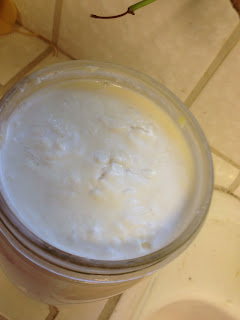Today we will go over Raw Feta Cheese
You will notice if you fallow the pictures it's very easy. You take the grain we where draining yesterday for 24 hours and you put it in a bamboo basket ( you get it from your local Asian store or online). Flatted cheese (prior to this step is if you desire to ad any dried herbs for taste) wrap the cheesecloth around cheese and weight it down I use a jar. Then leave for 24-48 hours depending in moister. It should be dry with a moist center.
Cut into squares and put it into a mason jar. Depending on how much you make the bottom 2 inches of the jar should be a salt water bind and the the rest the rest I fresh filter watt and put in the fridge it will last up to a year!!
Before using I like to soak in fresh water for a couple if hours to let the salt water soak back out of the cheese!!!
www.wendysebastian.com

























Comments
Post a Comment